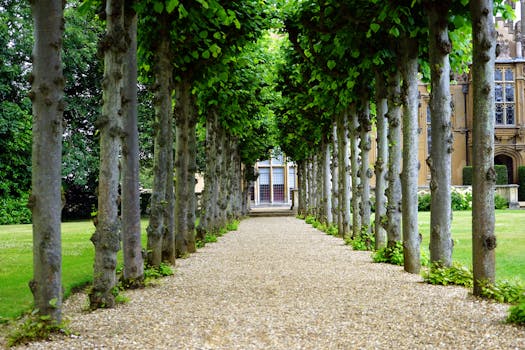Sketch Your Ideas for Arranging the Garden: Dividing the Space into Distinct Areas
Creating a garden is not just about planting flowers and vegetables; it’s about designing a space that reflects your personality and meets your needs. A well-arranged garden can enhance the aesthetic appeal of your home, provide a sanctuary for relaxation, and even serve as a productive space for growing food. This article will guide you through the process of sketching your ideas for arranging your garden by dividing the space into distinct areas.
The Importance of Garden Zoning
Garden zoning refers to the practice of dividing your garden into specific areas, each serving a unique purpose. This approach not only maximizes the functionality of your outdoor space but also creates a visually appealing layout. Here are some key benefits of garden zoning:
- Enhanced Organization: Clearly defined areas help in organizing plants, furniture, and pathways, making maintenance easier.
- Improved Aesthetics: Different zones can create visual interest and variety, making the garden more inviting.
- Functional Spaces: Designating areas for specific activities (like dining or gardening) ensures that the garden meets your lifestyle needs.
Identifying Distinct Areas in Your Garden
When sketching your garden layout, consider dividing it into the following distinct areas:
- Relaxation Zone: This area can include seating arrangements, hammocks, or even a fire pit. It should be a tranquil space where you can unwind.
- Vegetable and Herb Garden: Allocate a section for growing your own food. Raised beds or containers can be used to maximize space and improve accessibility.
- Flower Beds: Designate areas for ornamental plants and flowers that add color and beauty to your garden.
- Pathways: Create clear paths to connect different zones. This can be done using gravel, stepping stones, or mulch.
- Play Area: If you have children, consider a designated play area with safe, soft surfaces and engaging activities.
Sketching Your Garden Layout
Once you have identified the distinct areas, it’s time to sketch your garden layout. Here are some tips to help you create an effective design:
- Start with a Base Plan: Measure your garden space and create a scaled drawing. Include existing features like trees, fences, and buildings.
- Use Graph Paper: This can help you maintain proportions and visualize the layout more accurately.
- Incorporate Flow: Ensure that pathways connect different zones smoothly, allowing for easy movement throughout the garden.
- Consider Sunlight and Shade: Pay attention to how sunlight moves across your garden. Place sun-loving plants in bright areas and shade-tolerant plants in darker spots.
- Plan for Growth: Remember that plants will grow over time. Leave enough space for them to expand without overcrowding.
Case Studies: Successful Garden Zoning
To illustrate the effectiveness of garden zoning, let’s look at a couple of case studies:
Case Study 1: The Urban Oasis
A family living in a small urban home transformed their tiny backyard into a multi-functional space. They created a relaxation zone with a small patio, a vegetable garden in raised beds, and a flower bed along the fence. By using vertical gardening techniques, they maximized their space and created a lush, inviting environment.
Case Study 2: The Family Retreat
A suburban family designed their garden with distinct areas for entertaining, gardening, and play. They installed a large deck for outdoor dining, a dedicated vegetable patch, and a safe play area for their children. This zoning not only improved the functionality of their garden but also increased their property value by 15%.
Conclusion: Bringing Your Garden Vision to Life
Sketching your ideas for arranging a garden by dividing the space into distinct areas is a rewarding process that can lead to a beautiful and functional outdoor space. By understanding the importance of garden zoning, identifying distinct areas, and carefully planning your layout, you can create a garden that meets your needs and reflects your style. Remember to consider factors like sunlight, growth potential, and flow to ensure a harmonious design. With thoughtful planning and creativity, your garden can become a cherished retreat for years to come.
